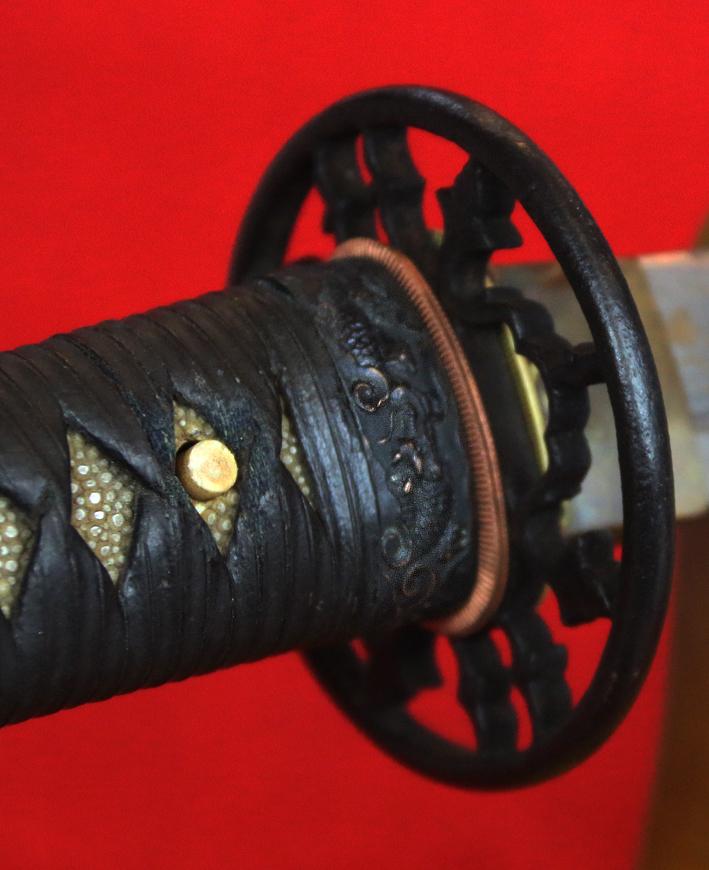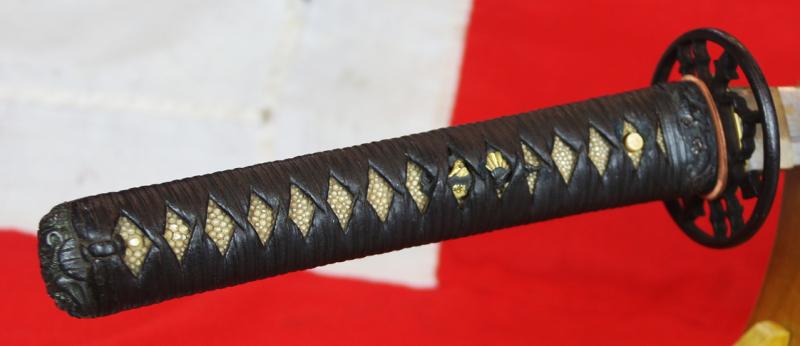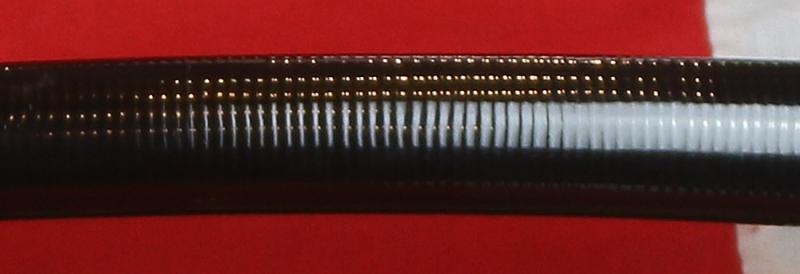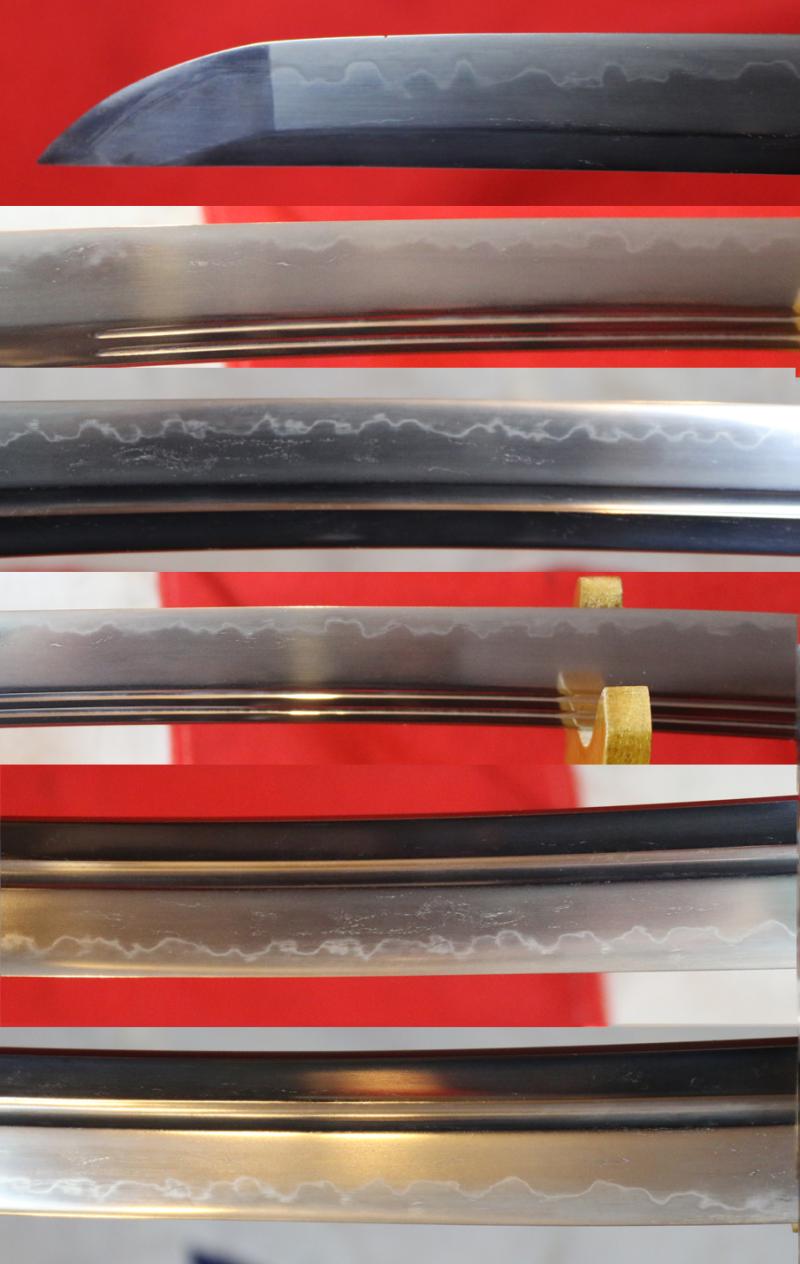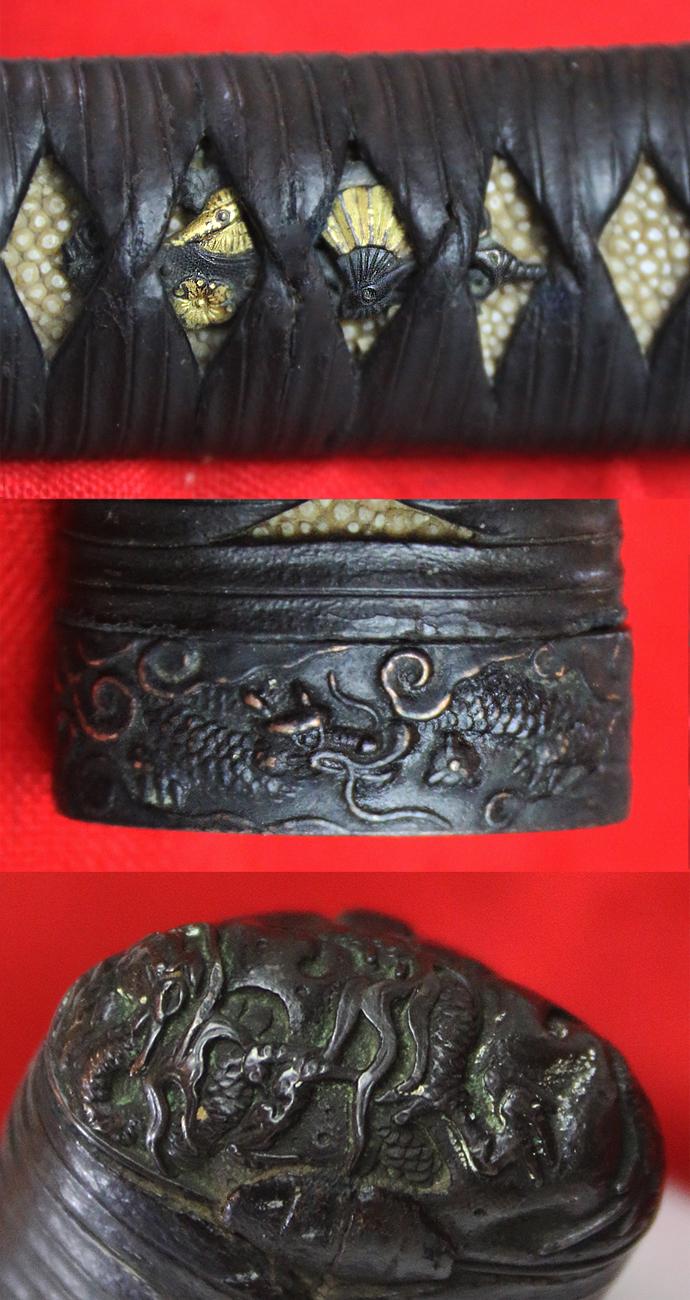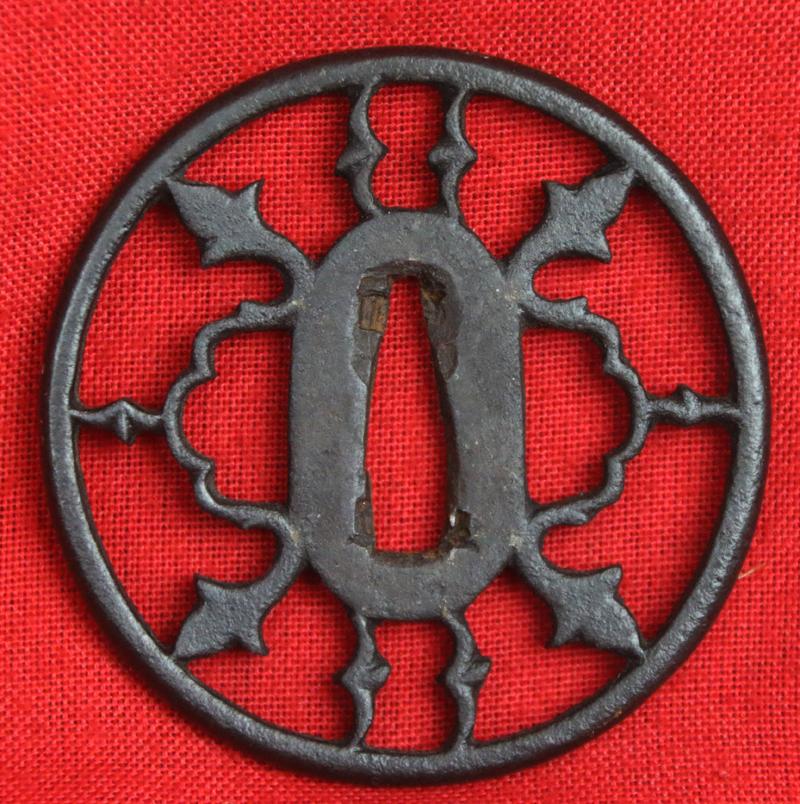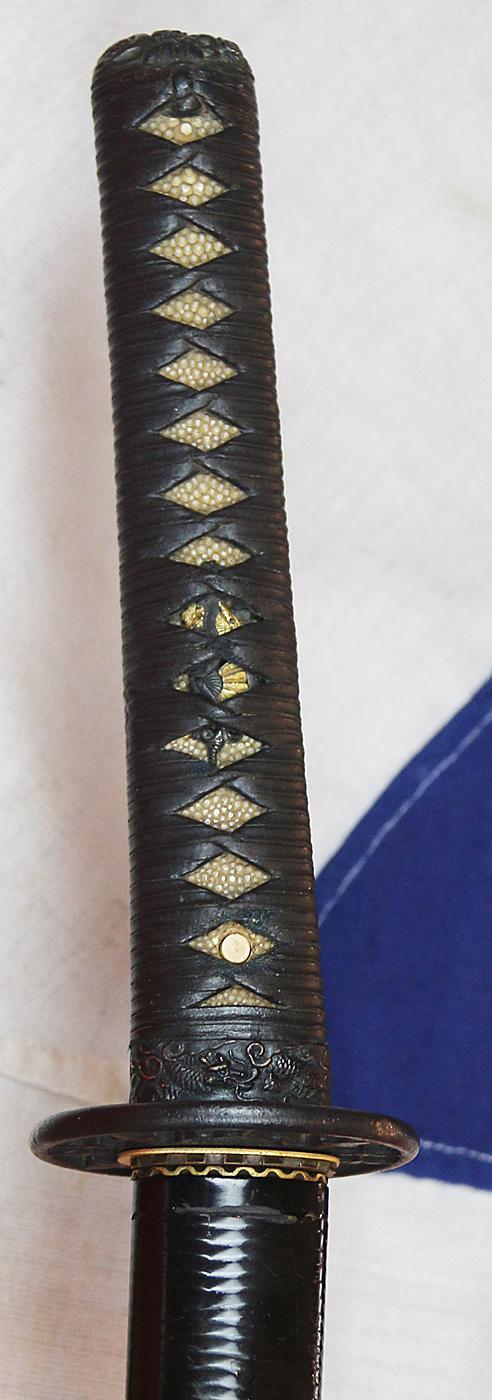An Exceptionally Handsome 500 Year Old Samurai Katana, Signed Bizen Osafune ju Kanemitsu, A Museum Quality Piece of Early Samurai History
In a classic and highly sophisticated all black ensemble of koshirae, and a sword that has a breathtakingly impressive curvature. It has all its original Edo mounts, of patinated copper, decorated with takebori relief dragons, an early iron Koto o-sukashi tsuba, a stunning, original, Edo period uniformly narrow ribbed black urushi lacquer saya, in super bright and glossy original condition. Deeply curved blade showing an outstanding active and vibrant hamon in great polish. The tsukaito is over-lacquered silk, in black, over-wrapped on pure gold and shakudo menuki which in turn are on traditional samegawa giant rayskin.
The activity in the hamon is, simply, spectacularly beautiful, and shows the wide Hi horimono groove on one side and a double Bo Hi on the other side of the blade face.
The Incredible Story of Japanese Lacquer on Samurai Swords Scabbards, called Saya
Japanese lacquer, or urushi, is a transformative and highly prized material that has been refined for over 7000 years.
Cherished for its infinite versatility, urushi is a distinctive art form that has spread across all facets of Japanese culture from the tea ceremony to the saya scabbards of samurai swords
Japanese artists created their own style and perfected the art of decorated lacquerware during the 8th century. Japanese lacquer skills reached its peak as early as the twelfth century, at the end of the Heian period (794-1185). This skill was passed on from father to son and from master to apprentice.
Some provinces of Japan were famous for their contribution to this art: the province of Edo (later Tokyo), for example, produced the most beautiful lacquered pieces from the 17th to the 18th centuries. Lords and shoguns privately employed lacquerers to produce ceremonial and decorative objects for their homes and palaces.
The varnish used in Japanese lacquer is made from the sap of the urushi tree, also known as the lacquer tree or the Japanese varnish tree (Rhus vernacifera), which mainly grows in Japan and China, as well as Southeast Asia. Japanese lacquer, 漆 urushi, is made from the sap of the lacquer tree. The tree must be tapped carefully, as in its raw form the liquid is poisonous to the touch, and even breathing in the fumes can be dangerous. But people in Japan have been working with this material for many millennia, so there has been time to refine the technique!
Flowing from incisions made in the bark, the sap, or raw lacquer is a viscous greyish-white juice. The harvesting of the resin can only be done in very small quantities.
Three to five years after being harvested, the resin is treated to make an extremely resistant, honey-textured lacquer. After filtering, homogenization and dehydration, the sap becomes transparent and can be tinted in black, red, yellow, green or brown.
Once applied on an object, lacquer is dried under very precise conditions: a temperature between 25 and 30°C and a humidity level between 75 and 80%. Its harvesting and highly technical processing make urushi an expensive raw material applied in exceptionally fine successive layers, on objects such as bowls or boxes.After heating and filtering, urushi can be applied directly to a solid, usually wooden, base. Pure urushi dries into a transparent film, while the more familiar black and red colours are created by adding minerals to the material. Each layer is left to dry and polished before the next layer is added. This process can be very time-consuming and labor-intensive, which contributes to the desirability, and high costs, of traditionally made lacquer goods. The skills and techniques of Japanese lacquer have been passed down through the generations for many centuries. For four hundred years, the master artisans of Zohiko’s Kyoto workshop have provided refined lacquer articles for the imperial household . Overall 37.75 inches long, blade tsuba to tip 27 inches
Code: 24324



